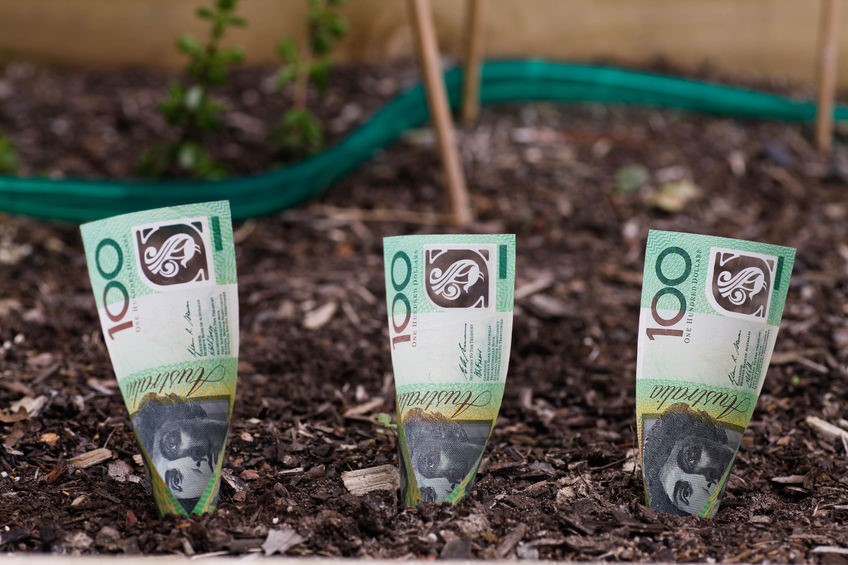
It is pretty clear, by the concessions available in the legislation, that it is the aim of the government to allow farmers to hold their farms in a SMSF. Nevertheless, it is far too easy to slip off the narrow path so make sure you get good advice right from the start. This blog will equip you with enough knowledge to judge a competent advisor.
There is a lot more information about SMSFs in our booklet http://www.bantacs.com.au/booklets/SMSFs_Booklet.pdf to bring you up to speed. This blog is a very specific list of must knows regarding holding your farm in a SMSF.
It is first important to understand what is business real property, This is important for two reasons. Firstly, there is the inhouse asset rule where a SMSF cannot lease a property to a related person unless it is business real property, for that matter the related person can’t even use it, lease or not. A related person includes members of the SMSF, related entities and relatives. The second point is that a SMSF cannot buy a property off a member or associates unless it is business real property. This is important if you already own the farm and are considering selling it to your SMSF.
Regardless. the whole owning a farm in a SMSF scenario is not going to work unless it is business real property. ATO ruling SMSFR 2009/1 is the go to reference on business real property. Sub section 66(5) of SISA requires the property to be real estate that is used wholly and exclusively in a business. SMSFR 2009/1 paragraph 31 allows a minor, insignificant or trifling non-business use of the property. Further, if a small part of the land is not used for any purpose at all, for example held with the plan for future expansion the property will still be considered to be used wholly and exclusively in a business. Though this will not fly if there are multiple titles and the unused portion is one complete title, reference SMSFR 2009/1 paragraph 265.
Don’t fret if your home is on the farm there is a carve out to the wholly and exclusively bit in sub section 66(6). Providing the portion of the property that is used for domestic or private purposes does not exceed 2 hectares and is not the predominant use of the property the farm house will not prevent the farm being considered business real property. SMSFR 2009/1 at paragraph 223 also requires the farm to take up more than half the area.
A property held for the purpose of earning residential rent is not business real property. This begs the question of what happens if the farm house is rented out to a third party? SMSFR 2009/1 does not address this at all but there is a compendium to the ruling that does
http://law.ato.gov.au/atolaw/view.htm?docid=CFR/SMSFR2009EC1/NAT/ATO/00001&recStart=1&PiT=99991231235958&recnum=4&tot=5&pn=ALL:::ALL basically it says that it does not matter whether the residential rental is to a third party or related party when it comes to farms.
Borrowing to Buy the Farm in a SMSF
This adds another layer of issues to consider. There are all the practicalities of setting up the bare trust before you sign a contract. Before you do that you need to find a bank that is prepared to lend you the money and jump through their hoops.
SMSFR 2012/1 looks at the extra conditions placed on a property when it is security for a SMSF loan. The nature of an asset held as security for a SMSF loan cannot be changed. Normally this would mean you could not build a house on vacant land as this would change the nature of the asset from vacant land to a residential property. Paragraphs 78 to 80 of SMSF 2012/1 give an example of a cattle property with no buildings on it. The SMSF builds a cattle shed and a residence for the farmer, it is considered this does not change the nature of the property from a cattle farm, it simply provides shelter for the cattle and a home for the farmer which is still part of the operations of a cattle farm. So when it comes to farmland it is ok to build on it even though it is security for the SMSF’s loan. The catch is you can’t borrow to build. Of course the SMSF needs to pay for the building. If you are going to have to give the money to the SMSF to do this you need to discuss the contribution caps with your financial advisor.
There is also a requirement that each loan and each bare trust must be for a single acquirable asset. Some farms consist of more than one title. According to SMSFR 2012/1 paragraphs 52 to 57 each title would be considered at separate single acquirable asset unless there was a substantial building straddling all the titles making it impossible for them to be sold separately. This means normally a farm with multiple titles is going to have to have multiple loans and multiple bare trusts if it is going to be purchased by a SMSF.
What is Owned by the Farmer and What is Owned by the SMSF
The next step in avoiding being caught with inhouse assets, is making sure the SMSF does not end up owning the non real estate part of the farm operations. If the SMSF owns anything used in the farming business that is not business real property (as in real estate used in a business) it is caught as an inhouse asset and a SMSF can only hold 5% of its assets in inhouse assets. So it is very important to know what is in and what is out. For example trees in an orchard are business real property because of their close connection to the land yet annual crops are not!
Generally, the rule is, can the item be removed from the farm without damaging it or the farm. Obviously, a concrete slab becomes part of the real estate but if you move a container onto the land for storage it will not become part of the real estate because it is simply attached to the land by its own weight. It is very important that the SMSF does not pay for items that are not business real property but equally as important that the members do not pay for items that are considered to be part of the land. In the latter case you need to speak to your Accountant, first, about whether you can get around this by making an in-specie contribution reference TR 2010/1 paragraphs 30 and 32 or by being reimbursed.
Some examples from ATO rulings
Part of the Land – Needs to be owned (ie paid for) by SMSF
- Trees reference SMSFR 2009/1 paragraph 83
- Grape Vines reference SMSFR 2009/1 paragraph 238
- A shed or farm house reference SMSFR 2012/1 paragraphs 78 to 80
- Relocatable Buildings that have permanent foundations with water and electricity connected reference SMSFR 2009/1 paragraph 79
- Concrete Silo or water tank reference SMSFR 2009/1 paragraph 77
- Lean-to that would cost more to remove than its separate value SMSFR 2009/1 paragraph 78
- Renovating the kitchen or bathroom of the farm house but not necessarily the plant and equipment such as the stove. Reference TR 2010/1 paragraph 206
- Slab, includes a building constructed on slab reference SMSFR 2009/1 paragraph 78
- Dam reference SMSFR 2009/1 paragraph 78
- Fencing reference SMSFR 2009/1 paragraph 78, though usually the lease would make it the responsibility of the farmer to repair fences.
- Irrigation pipes that are laid underground and cannot be removed with out being destroyed reference SMSFR 2009/1 paragraph 78.
Separate from the land – Should not be owned or paid for by SMSF
- Annual Crops reference SMSFR 2009/1 paragraph 84
- Container merely placed on the land SMSFR 2009/1 paragraph 76
- Silo merely anchored to the land but can be relocated easily without damage reference SMSFR 2009/1 paragraph 77
- Water Licence SMSFR 2009/1 paragraphs 266 to 269
- Slasher and other loose plant and equipment even though it is necessary to maintain the SMSFs property in good order.
- Irrigation would generally be plant and equipment so separate from the land though there maybe some parts that are so fixed to the land, such as underground pipes, that their removal from the land would destroy them so SMSFR 2009/1 at paragraph 78 would consider them to be part of the business real property.
Note it maybe possible to structure the lease agreement between the SMSF and the farmer so that improvements the farmer makes are not considered contributions reference TR 2010/1 paragraphs 29 to 32 and 206 but this is at the pointy end, make sure your auditor is going to accept this.
As mentioned earlier the SMSF can own a small portion of the non real estate assets (ie plant and equipment) that are then leased to the related party business. The value of the of these assets must be less than 5% of the total SMSF’s net assets and a market value rent must be paid. More detail on this strategy is available in SMSFR 2009/4. It is probably better to leave this small amount available for items where it is not clear whether they are part of the property or not.
This article is general advice only and has been written to give you an idea of what properties would be suitable for a SMSF and show you just why you need to see your Accountant before you sign anything. This is just the tip of the iceberg there is so much more that needs to be considered from GST to succession planning.
 Julia's Blog
Julia's Blog